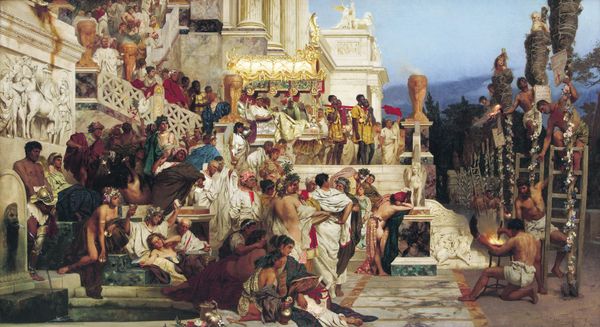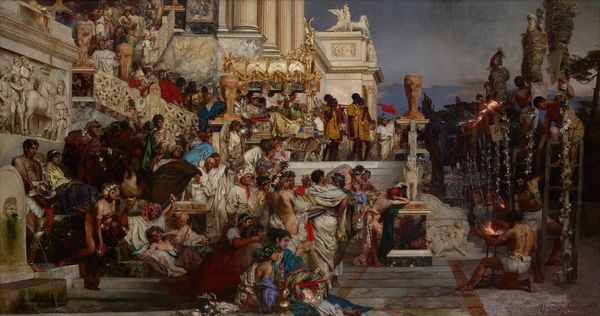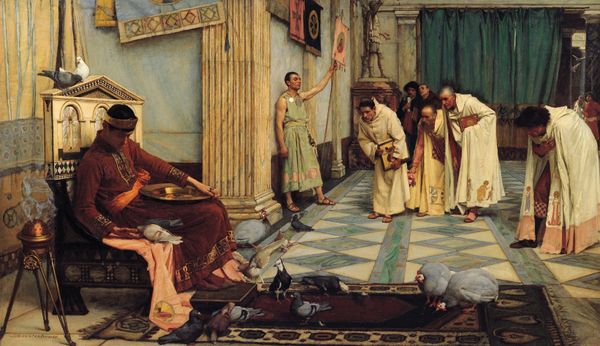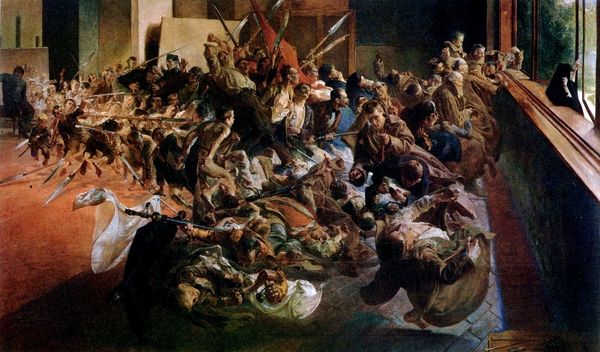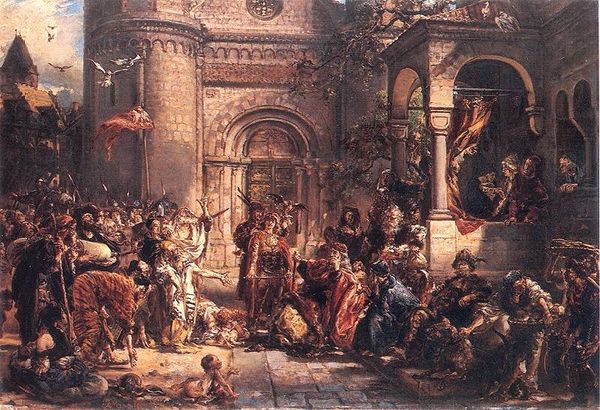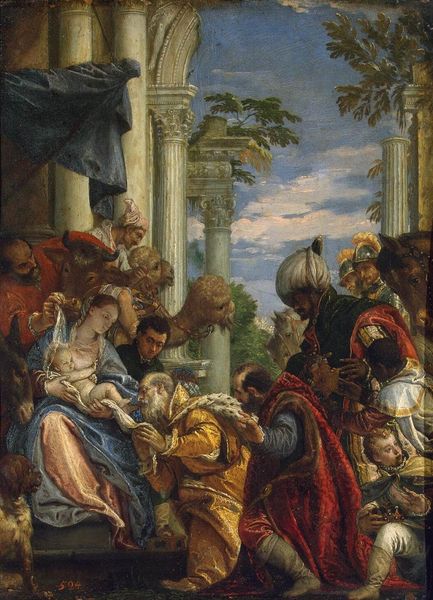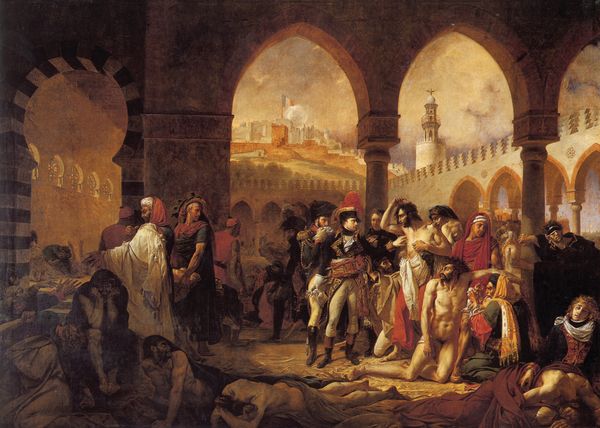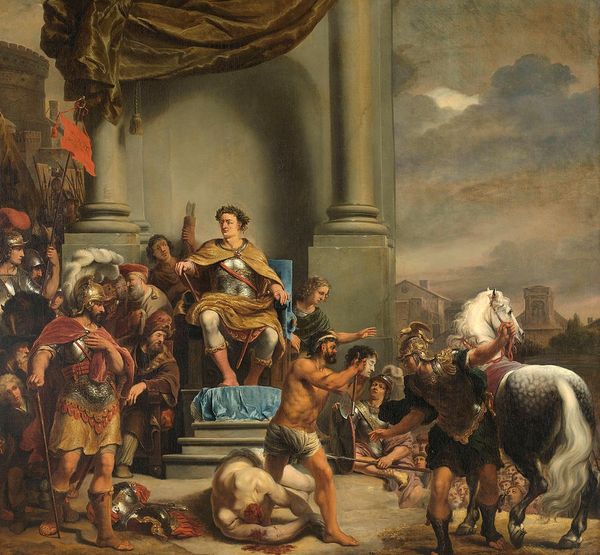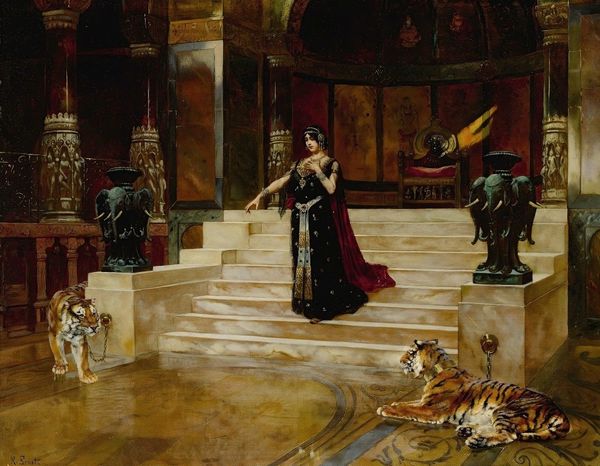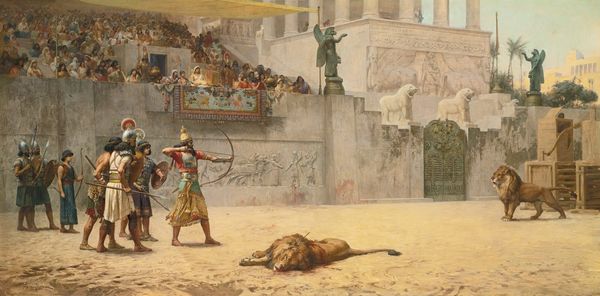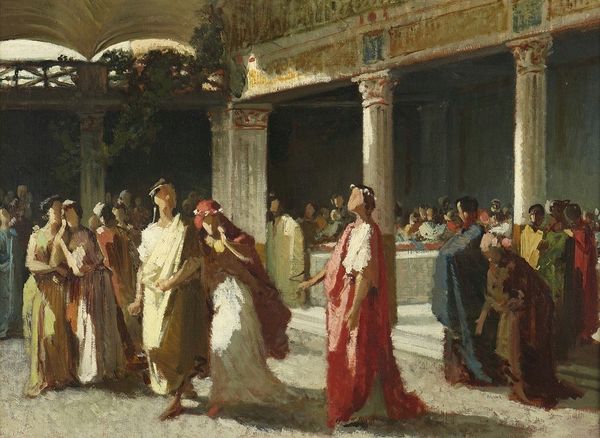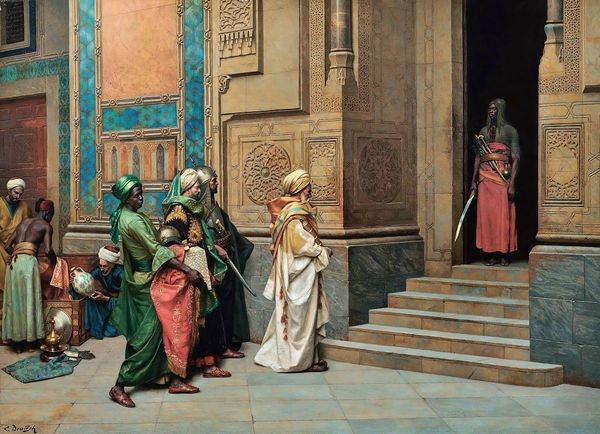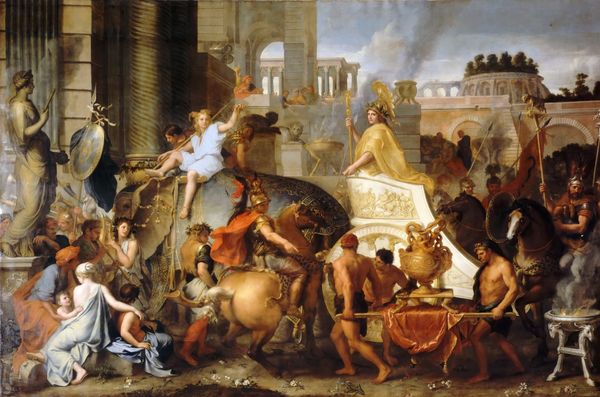
painting, oil-paint
#
figurative
#
allegory
#
baroque
#
painting
#
oil-paint
#
landscape
#
classical-realism
#
figuration
#
oil painting
#
history-painting
#
academic-art
#
realism
Copyright: Public Domain: Artvee
Curator: I feel immediately drawn in, but with a hefty dose of historical and symbolic baggage. Editor: Indeed. What we have here is Henryk Siemiradzki's *Christian Dirce*, an oil on canvas that epitomizes academic art with its classical realism. Notice how the scene unfolds with an almost theatrical quality. Curator: "Theatrical" nails it. It feels like the curtain's just risen on Act V, and the air’s thick with doom. Is that… a woman tied to a bull? That can’t end well. There's a dark beauty about it all, though, isn’t there? Even in the gruesomeness. Editor: The composition adheres to the classical principles of balance and harmony, presenting the persecution of Christians under Nero, where Dirce, a Christian woman, suffers a martyr's death tied to a bull. Siemiradzki uses this tableau to explore the dichotomy of pagan excess and Christian virtue, really underlining themes central to much 19th-century thought. Observe the architectural details. The perspective is constructed around strict rules that lend it a timelessness beyond fleeting emotion. Curator: Timelessness… or maybe frozen in time. What about the faces in the crowd? Some are clearly enjoying this barbaric display, others are looking away with disgust, or just sort of detached. Like a social media feed come to life – apathy right next to outrage. Gives you the shivers, no? Also, those jewel tones - blood red, rich gold – such decadent colors for such a depraved event. Editor: Color indeed works to accentuate not just surface detail but the conceptual contrasts too. Note the cold, calculated composition and placement of key actors in relationship to their gazes. Also key is the spatial organization, with different emotions registered from all points on that constructed viewing point on the balustrade, really showing both distance, and also implied power in observation. Curator: Siemiradzki manages to get you lost in the aesthetics and horror. It almost normalizes cruelty through artistic craft. Leaving me questioning everything. Editor: Precisely. It's in forcing us to dissect that beauty, in its rigorous application of academic method, that the painting makes us reckon with difficult ethical questions beyond this specific event. Art as intellectual confrontation, would you say? Curator: Absolutely. Art as confrontation. That's a potent way to view such a moment in time. It stays with you long after you’ve looked away.
Comments
No comments
Be the first to comment and join the conversation on the ultimate creative platform.
